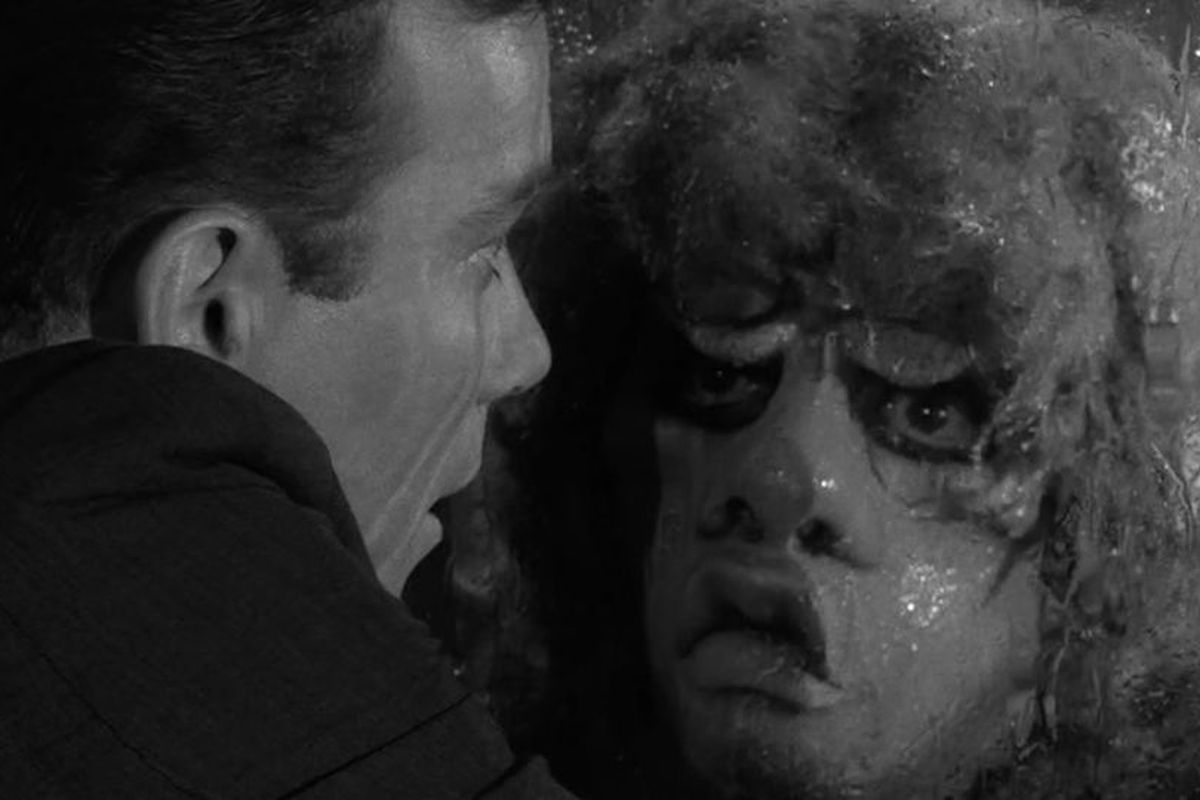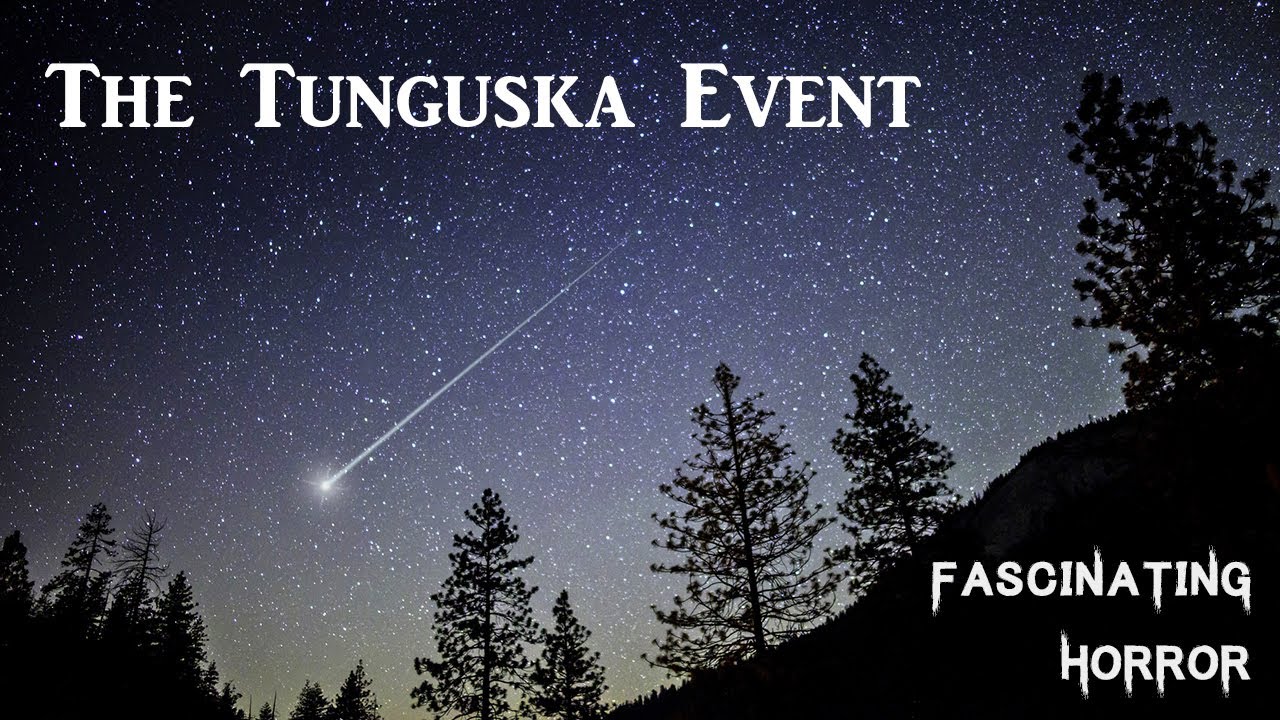Weird And Unusual Situations That Will Make You Feel Like You're In The Twilight Zone
The Twilight Zone is a TV series that first aired in the 1950s, known for its surreal and mind-bending stories that often leave viewers questioning their reality. However, there are some real-life events and situations that are so strange and inexplicable that they could easily be a plot of an episode. Here are some examples of weird and unusual situations that will make you feel like you're in The Twilight Zone.
Author:Morgan MaverickReviewer:Professor JhizMay 30, 2023847 Shares105.8K Views

The Twilight Zone is a TV series that first aired in the 1950s, known for its surreal and mind-bending stories that often leave viewers questioning their reality. However, there are some real-life events and situations that are so strange and inexplicable that they could easily be a plot of an episode. Here are some examples of weird and unusual situations that will make you feel like you're in The Twilight Zone.
Unsettling Situations That Will Make You Feel Like You've Entered The Twilight Zone
Check out these weirdand unusual situations that will make you feel like you're in The Twilight Zone:
The Tunguska Event
The Tunguska Event is a mysterious and unexplained explosion that occurred in the early morning of June 30, 1908, in the remote forests of Siberia, Russia. The event is named after the Tunguska River, which flows through the region, and it is considered one of the most significant natural disasters of the 20th century.
The explosion was so powerful that it flattened trees over an area of 2,000 square kilometers and caused a shockwave that was felt as far away as the United Kingdom. Despite the extensive damage caused by the explosion, there were no recorded human casualties, as the area was sparsely populated.
The cause of the Tunguska Event remains a subject of scientific debate, and various hypotheses have been put forward over the years to explain what exactly happened that fateful day.
The Tunguska Event is widely believed to have been caused by the impact of a large asteroid or comet. The explosion was estimated to be equivalent to between 5 and 15 megatons of TNT, making it one of the most powerful explosions in recorded history.
The energy released by the explosion was 1,000 times greater than that of the atomic bomb dropped on Hiroshima during World War II. The blast wave from the explosion knocked people off their feet and shattered windows as far away as 400 kilometers from the epicenter.
The first scientific expedition to investigate the Tunguska Event was led by Russian mineralogist Leonid Kulik in 1927, almost two decades after the explosion occurred. Kulik encountered extensive damage to the surrounding forest and found trees lying in radial patterns, indicating that they had been knocked down by a shockwave.
The trees in the center of the blast zone were stripped of their branches and bark, but their trunks remained standing. Kulik's team also discovered large areas of scorched earth and melted glass fragments, known as "sphericals," which were later identified as being of extraterrestrial origin.
One of the most compelling pieces of evidence for the impact theory is the presence of microscopic diamonds in soil samples taken from the Tunguska blast site. These diamonds are believed to have been formed by the high pressures and temperatures created by an extraterrestrial impact.
Other researchers have suggested that the explosion was caused by a natural gas explosion, a volcanic eruption, or even a black hole passing through the Earth.

The Tunguska Event | A Short Documentary | Fascinating Horror
The Wow! Signal
The Wow! Signal is a mysterious radio signal that was detected by astronomer Jerry R. Ehman on August 15, 1977, while he was working on a SETI (Search for Extraterrestrial Intelligence) project at the Big Ear radio telescope in Ohio.
The signal was so unusual that Ehman circled it on the computer printout and wrote "Wow!" next to it, thus giving it its name. The signal has never been explained, and its origin remains a mystery to this day.
The signal lasted for 72 seconds, and was a narrowband emission, meaning that it was confined to a very small range of frequencies. This is unusual for natural radio signals, which tend to be more spread out across a broader range of frequencies. The signal was also very strong, with an intensity roughly 30 times greater than the background noise.
One possibility for the origin of the signal is that it was a message from an extraterrestrial civilization. However, this explanation is considered unlikely by most scientists, as the signal has never been detected again despite numerous attempts to do so.
Furthermore, the signal's frequency was in the range of 1,420 MHz, which is a common frequency for radio astronomy observations. If an extraterrestrial civilization were trying to send a message, it would be more likely that they would use a frequency that is not associated with natural radio emissions.
Another possibility is that the signal was caused by a natural phenomenon, such as a pulsar or a black hole. However, no natural explanation has been found that fits the characteristics of the signal.
Some researchers have suggested that the signal may have been caused by an Earth-based source, such as a satellite or a military aircraft. However, this explanation is also considered unlikely, as the signal's frequency was not consistent with any known Earth-based transmissions.
Despite the mystery surrounding the Wow! Signal, it remains one of the most intriguing signals ever detected by astronomers. It has inspired numerous theories and has captured the imagination of the public, who continue to wonder about its possible origins. Some scientists believe that the signal may have been a one-time event, while others believe that it may have been part of a series of signals that have gone undetected.
The Dancing Plague
The Dancing Plague, also known as the Dancing Mania, was a strange phenomenon that occurred primarily in the Middle Ages, from the 14th to the 17th century. It was characterized by groups of people suddenly and inexplicably dancing in the streets for days, even weeks, until they eventually collapsed from exhaustion or died.
This mysterious event has puzzled historians, scientists, and medical professionals for centuries, and many theories have been proposed to explain it.
The first recorded incident of the Dancing Plague occurred in 1374 in Aachen, Germany. A woman named Frau Troffea began dancing in the street and soon attracted a group of followers who danced with her.
Within a week, more than 30 people were dancing with her, and the number continued to grow. The dancing continued for days, and by the end of the month, some of the participants had died from exhaustion or heart attacks.
Similar outbreaks occurred throughout Europe over the following centuries, with the most famous occurring in Strasbourg, France, in 1518. In this instance, a woman named Frau Troffea (a different woman with the same name as the Aachen case) began dancing and was soon joined by hundreds of others.
The dancing lasted for weeks and spread to neighboring towns. Some people even danced until they collapsed or died from exhaustion.
One theory about the Dancing Plague is that it was caused by mass hysteria. This occurs when a group of people shares a belief or fear that leads to a collective mental state that can cause physical symptoms.
In the case of the Dancing Plague, it's possible that the people who joined in the dancing were caught up in a shared sense of euphoria or anxiety that caused them to dance uncontrollably.
Another theory is that the Dancing Plague was caused by a psychotropic substance, such as ergot. Ergot is a fungus that grows on rye and can cause hallucinations and muscle spasms when ingested.
It's possible that the people who participated in the dancing were exposed to ergot through contaminated bread, which was a common staple food during this time period.

BIZARRE HISTORY: The Dancing Plague Of 1518
People Also Ask
What Is The Twilight Zone?
The Twilight Zone is a TV series that originally aired in the 1960s and features a collection of strange, surreal, and often unsettling stories.
What Are Some Famous Episodes Of The Twilight Zone?
Some of the most famous episodes of The Twilight Zone include "Time Enough at Last," "Nightmare at 20,000 Feet," and "To Serve Man."
What Is The Meaning Of The Phrase "Twilight Zone"?
The phrase "Twilight Zone" is often used to describe situations that are strange or surreal, or situations where the normal rules don't seem to apply.
What Are Some Other TV Shows Or Movies That Are Similar To The Twilight Zone?
Some other TV showsand movies that are similar to The Twilight Zone include Black Mirror, The Outer Limits, and Tales from the Crypt.
What Are Some Common Themes In The Twilight Zone?
Some common themes in The Twilight Zone include the nature of reality, the fragility of the human mind, and the consequences of actions. Many episodes also have a moral or philosophical message.
Conclusion
These are just a few examples of weird and unusual situations that will make you feel like you're in the Twilight Zone. While some of these weird and unusual situations that will make you feel like you're in The Twilight Zone may have rational explanations, others remain unsolved mysteries that continue to baffle scientists and historians alike. The world is full of strange and unexplained phenomena, and it's up to us to try and make sense of them.

Morgan Maverick
Author
Morgan Maverick is an unorthodox news reporter driven by an insatiable hunger for the truth. Fearless and unconventional, he uncovers hidden narratives that lie beneath the surface, transforming each news piece into a masterpiece of gritty authenticity. With a dedication that goes beyond the boundaries of conventional journalism, Morgan fearlessly explores the fringes of society, giving voice to the marginalized and shedding light on the darkest corners.
His raw and unfiltered reporting style challenges established norms, capturing the essence of humanity in its rawest form. Morgan Maverick stands as a beacon of truth, fearlessly pushing boundaries and inspiring others to question, dig deeper, and recognize the transformative power of journalism.

Professor Jhiz
Reviewer
Professor Jhiz brings fun to teaching anatomy. Born in China, she shares her fascination for how the body works.
Students say her lectures are lively with jokes and stories. She draws cartoon diagrams that highlight structures creatively.
Professor seeks to inspire curiosity and joy in anatomy. She treats each class like a show using props and costumes.
When not teaching, Jhiz enjoys karaoke and novelty socks. Her goal is passing on a spirit of wonder to students.
Latest Articles
Popular Articles